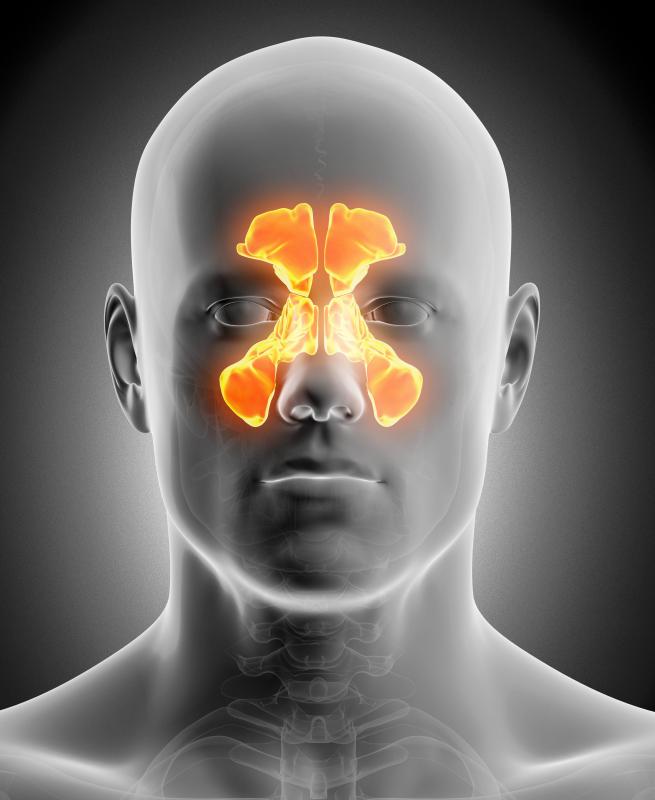At TheHealthBoard, we're committed to delivering accurate, trustworthy information. Our expert-authored content is rigorously fact-checked and sourced from credible authorities. Discover how we uphold the highest standards in providing you with reliable knowledge.
What Causes Sinus Cancer?
Sinus cancer is a type of carcinoma that involves one of the sinus cavities. Since these regions are paranasal, meaning situated near the nose, sinus cancer is also commonly known as paranasal cancer. It is relatively rare among all populations. However, for reasons not well understood, it tends to occur more frequently in South Africa and Japan, and affects twice as many men as women. It is also rarely seen in individuals younger than 40, although it can strike in children. Unfortunately, what specifically triggers sinus cancer is even more of a mystery.
Before detailing the potential causes of sinus cancer, it’s necessary to have a basic understanding of the anatomical structure of the paranasal sinuses. The specific location of each pair of sinus cavities determines their name, which is taken from the name of the bones lying adjacent to them. For example, the sphenoid sinuses are so-named because they are embedded in the skull directly behind the nose. The sinuses cavities residing in each cheek on either side of the nose are called the maxillary sinuses, while the ethmoid sinuses are found on each side of the upper bridge of the nose. Those located just above each eyebrow are simply referred to as the frontal sinuses.

The primary function of the sinuses is to manufacture air-filtering mucus secretions, which are generated from specialized cells that line each cavity. However, these structures also contain flat, irregular shaped cells called squamous cells; the most commonly affected cells when cancer develops in any organ of the body. Not surprisingly, then, squamous cell carcinoma is the most common form of sinus cancer. In addition, the sinus cavities provide an opportune environment for cancer cells to multiply just given the amount of space available.

Unlike many other forms of cancer, sinus cancer doesn’t persist in families, indicating there is no specific genetic marker involved. This makes this type of cancer somewhat unpredictable, at least from a hereditary standpoint. However, there appears to be a few known factors that may contribute to causing sinus cancer. Researchers have found that the highest incidence occurs in people who regularly inhale dust particles generated from working with metal or wood. Smokers may also be at higher risk.

Symptoms are often confused with those associated with sinusitis, which is not a cause of sinus cancer. These include blocked nasal passages, a sensation of pressure, vision disturbances, nosebleeds, and even loose teeth. Unfortunately, these signs are often ignored until the cancer has spread to surrounding areas. Once detected, treatment may involve surgery to remove accessible tumors, or radiation therapy. However, since the five-year survival rate among post-treatment patients is only 10-20 percent, it is critical to consult with a physician at the first sign of symptoms.
AS FEATURED ON:
AS FEATURED ON:















Discussion Comments
I was diagnosed with stage 4 sinus cancer June last year, and had surgery in July. For almost 40 years I have been in the aircraft business, involved in the overhaul and repair of navy airplanes and its components, being exposed to different types of paints, grease, solvents, toxic fluids, etc, etc.
I submitted a claim with the Department of Labor for compensation and was denied. Has anybody had this experience? If so, I would like to hear about it, and if there's any other way I can do this, maybe recommend a lawyer or otherwise. I would appreciate any input.
Post your comments